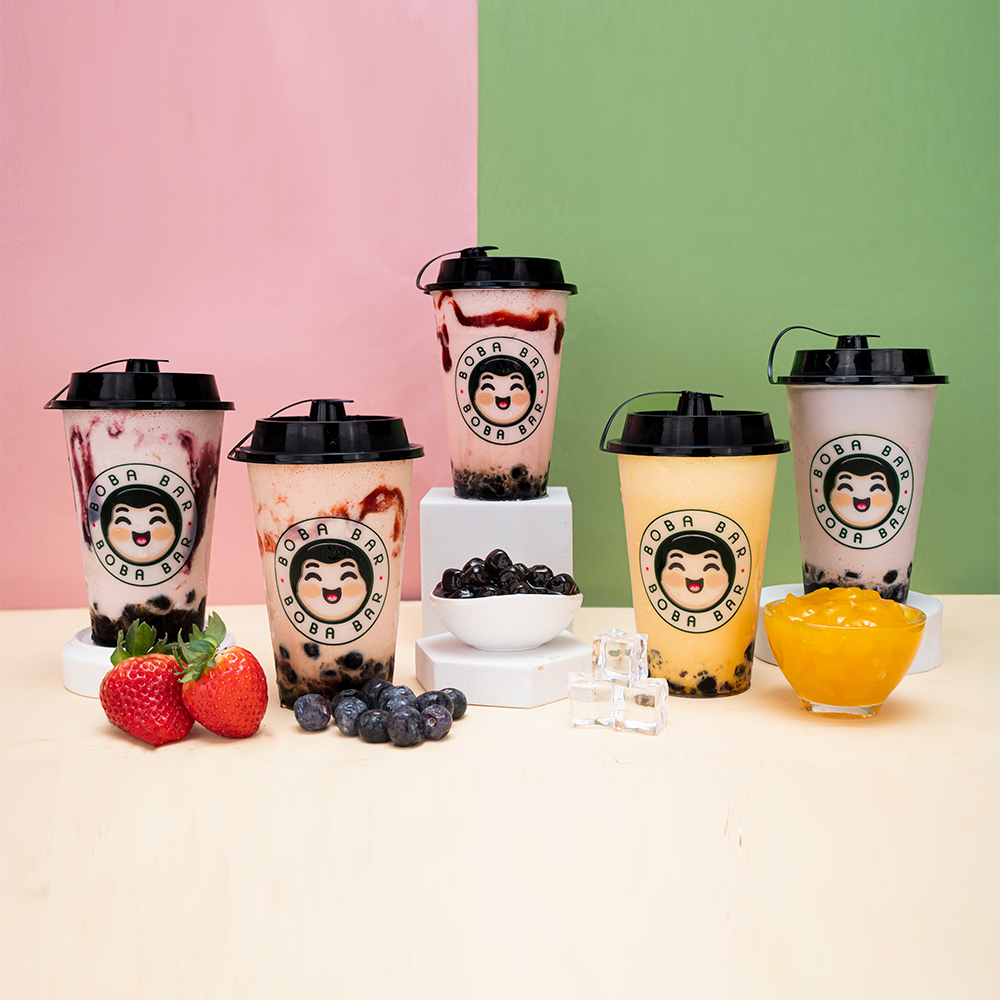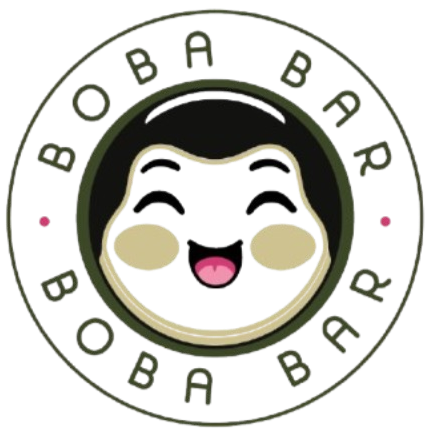

10 Things You Didn’t Know About Bubble Tea vs Boba Tea
Jasneet KaurShare
10 Powerful Insights into Bubble Tea vs Boba Tea

Bubble Tea vs Boba Tea: Are They Really Any Different?
In the swirling world of tea drinks, one debate always finds its way into conversations, social feeds, and Google searches: Bubble Tea vs Boba Tea. You’ve probably heard both names countless times, maybe even used them interchangeably. But is there really a difference between the two? Or is it all just a naming game?
This question has become increasingly popular—especially for those new to the drink or exploring it through delivery apps, menus, or recommendations. It's not just a matter of semantics; it's about understanding the drink’s origin, how it's made, and the culture behind the terminology.
Let’s unravel the story of Bubble Tea vs Boba Tea once and for all.
The Birth of a Global Trend
To understand the essence of the Bubble Tea vs Boba Tea conversation, we have to go back to Taiwan in the early 1980s. It was here that street vendors began experimenting with iced tea, adding sweeteners, milk, and other textures. One of the most popular twists came when tea was shaken in cocktail-style shakers, creating a foamy layer at the top. That layer inspired the name “bubble tea.”
At this point, there were no pearls—just tea, milk, and foam. But things changed rapidly.
The chewy tapioca pearls, known for their bounce and satisfying texture, soon entered the scene. As these pearls became more central to the experience, people began to call the drink “boba tea,” especially in the United States. In Taiwanese slang, “boba” originally referred to something round—making it a perfect fit.
So the debate of Bubble Tea vs Boba Tea essentially began with a shift in what part of the drink people were emphasizing.
What Is Bubble Tea Exactly?
In the context of Bubble Tea vs Boba Tea, bubble tea is often thought of as the more traditional name. It refers to a tea-based beverage—usually black, green, jasmine, or oolong—shaken with milk or fruit flavours until a bubbly foam forms at the top.
Contrary to what some might believe, the "bubble" in bubble tea originally pointed to this foamy layer, not the tapioca pearls.
Over time, pearls were added to the drink along with other toppings like grass jelly, fruit chunks, popping boba, aloe vera, pudding, and even cheese foam. But the name stuck.
Whether served hot or cold, plain or blended, bubble tea became a global staple for those looking to enjoy a refreshing, sweet, and often chewy beverage.
Also read: Why is Mango Matcha Bubble Tea Taking Over Social Media?
What About Boba Tea Then?
Now let’s look at the “boba” in the Bubble Tea vs Boba Tea debate.
Boba tea, by definition, is essentially the same drink—but with the emphasis squarely on the tapioca pearls. These pearls are made from cassava starch, boiled until they’re chewy, and then soaked in sweet syrup. They're what sets the drink apart from just any tea or milk beverage.
In places like California, the word “boba” quickly gained popularity. You might hear people say, “Let’s go grab boba,” even when they’re referring to a drink with fruit tea and no pearls. It became more of a cultural reference than a literal one.
So, in the world of Bubble Tea vs Boba Tea, one name emphasizes preparation (bubbles), while the other celebrates texture (boba). But both refer to the same base beverage.
Are They the Same? Spoiler Alert: Yes.
Let’s settle this once and for all: when it comes to Bubble Tea vs Boba Tea, the difference is—surprise!—almost nonexistent. It really all comes down to terminology, regional preferences, and cultural context, not the actual drink itself.
Think of it the way you’d compare “soda” and “pop” or “fries” and “chips.” They all point to the same tasty thing but carry different names depending on where you are. The same applies to Bubble Tea and Boba Tea—both are just names for the same iconic, slurp-worthy beverage.
From a technical and ingredient standpoint, there is no real distinction between the two. Whether you walk into a tea shop in Taipei, Los Angeles, or Mumbai, you're likely to be served a cup made with the same essential components.
Here’s what they both typically include:
- A tea base: This can be black tea, green tea, oolong, jasmine, or even more unique options like Thai tea or matcha. The tea is steeped to perfection and acts as the foundation of the drink.
- Milk or fruit flavors: Depending on your preference, the tea may be blended with milk (dairy or non-dairy) or fruit purées and syrups. This creates either a creamy or fruity profile, and both styles are equally popular.
- A sweetener: Sugar syrup, brown sugar, honey, agave, or other flavor enhancers are added to suit your taste. Most shops allow you to customize sweetness levels—light, medium, or full.
- Ice: It’s served chilled in most cases, although hot versions are available too. Crushed or cubed ice is added to cool down the drink and balance the richness of the milk or the boldness of the tea.
-
Toppings: This is the fun part. Toppings range from the classic chewy tapioca pearls (aka boba) to fruit jellies, popping boba (juice-filled bubbles that burst in your mouth), aloe vera, egg pudding, red bean, or even whipped cheese foam.
Whether someone hands you a cup and says, “Here’s your bubble tea,” or “Here’s your boba tea,” chances are you're sipping on the exact same drink—customizable, flavorful, and full of texture.
So when you’re browsing a delivery app, glancing at a café chalkboard, or asking a friend for a recommendation, don’t stress about the Bubble Tea vs Boba Tea label. You’re not picking between two different drinks—you’re just choosing between two equally delightful names for a shared experience.
In essence, the drink you love hasn’t changed. It’s simply been given a new name depending on where you are or who’s talking about it. Whether it’s called bubble tea in one country or boba tea in another, the core joy of sipping a sweet, icy, chewy treat through a wide straw stays exactly the same.
So go ahead—call it whatever you like. Your taste buds will thank you either way.
Bubble Tea vs Boba Tea: Why the Naming Confusion?
The reason this confusion even exists comes down to geography and culture.
In Taiwan, where it all began, the drink is still widely referred to as bubble tea or pearl milk tea. In Hong Kong and other parts of Asia, “bubble tea” is the more common term.
In the U.S., especially on the West Coast, “boba tea” took over. This is where the chewy pearls became the standout feature, and people began identifying the entire drink by that component.
When you compare Bubble Tea vs Boba Tea globally, the takeaway is this: the name reflects what part of the drink a region has fallen in love with.
Variations of the Same Classic
Another way to understand Bubble Tea vs Boba Tea is to look at the many forms the drink can take. Whether someone calls it bubble tea or boba tea, the customization options are nearly endless:
- Milk Tea: Black tea or green tea with condensed milk or creamers.
- Fruit Tea: Mango, lychee, passionfruit, peach, or kiwi.
- Blended: Ice blended into a smoothie-like texture.
- Hot or Iced: Served either steaming or over ice.
-
Toppings Galore: Pearls, jellies, pudding, popping boba, whipped foam, crème brulée tops—the list keeps growing.
And again, none of these changes the answer to the ongoing question of Bubble Tea vs Boba Tea. It's all the same canvas—just painted differently.
Bubble Tea vs Boba Tea at a Glance
Here’s a snapshot of what you might expect from both names:
| Feature | Bubble Tea | Boba Tea |
| Focus | Frothy foam from shaking | Tapioca pearls |
| Common in | Asia, Europe | U.S., especially West Coast |
| Core Ingredients | Tea, milk/fruit, pearls | Tea, milk/fruit, pearls |
| Popular Phrasing | “Let’s get bubble tea” | “Let’s get boba” |
Even the table makes it clear: the differences in Bubble Tea and Boba Tea are more cultural than culinary.
Frequently Asked Questions
Is there any difference in preparation between Bubble Tea and Boba Tea?
No. Both are made using similar methods. You steep the tea, add milk or fruit flavoring, sweeten it, and then shake or blend it with toppings.
Why do some places only say Bubble Tea or Boba Tea?
Marketing, audience, and region. Some places use “bubble tea” because their audience is more familiar with it. Others use “boba tea” to tap into younger, trendier consumers.
Does one have more caffeine than the other?
No, caffeine content depends on the tea used—black tea has more caffeine than green or herbal tea, for example—not on whether you call it bubble or boba.
Can I say both Bubble Tea and Boba Tea in the same sentence?
Absolutely. In fact, you’ll often see branding that includes both, to appeal to all types of customers searching for either name.
Cultural Reflections Through Language
The discussion of Bubble Tea vs Boba Tea is more than just food trivia—it’s a peek into how language evolves with global trends.
In some regions, “bubble tea” sounds nostalgic and closer to the drink’s origins. In others, “boba tea” feels like modern slang—fun, quick, and catchy.
Regardless of what name is trending, the love for the drink is universal.
The Impact of Names in Delivery & Marketing
Whether you’re ordering online or scrolling through a menu, your search terms matter. If a customer types “boba tea near me” but a shop only uses “bubble tea,” they may miss out on discovering a spot they’d love.
That’s why many businesses, including Boba Bar, use both terms in descriptions. It ensures that no matter how customers phrase it—Bubble Tea vs Boba Tea or Bubble Tea and Boba Tea—they land on the same joyful drink.
Common Misconceptions (Busted)
- “Bubble tea doesn’t have pearls.” – Not true. Most versions do, unless you opt out of them.
- “Boba tea is only cold.” – False. Both can be hot or cold.
-
“Bubble Tea is the original, so it’s more authentic.” – Both are authentic, just differently branded.
So, Who Wins?
In the debate of Bubble Tea vs Boba Tea, everyone wins. You’re not choosing sides; you’re embracing both.
They are two sides of the same coin, two names for one drink that continues to capture attention across generations and borders.
Final Sip
At the end of the day, Bubble Tea and Boba Tea are not competitors—they're companions. Whether you lean toward the foamy tradition of bubble tea or the chewy excitement of boba tea, you're sipping on the same delicious experience.
The next time someone asks, “What’s the difference between Bubble Tea vs Boba Tea?” you can smile and say, “Not much—just the name.”
Order your favourite, pick your toppings, and enjoy the flavour fusion that’s captivated millions. Because in the world of Bubble Tea and Boba Tea, there are no wrong answers—only sweet, chewy, sippable ones.



